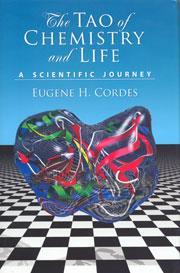The tao of chemistry and life: a scientific journey
The tao of chemistry and life: a scientific journey
Eugene H Cordes
New York, US: Oxford University Press 2009 | 414pp | ?34.99(HB)
ISBN 9780195369632
Reviewed by Dennis Rouvray

Author Cordes does not appear to like chemistry textbooks very much. In fact, he is quite dismissive of them and attacks them for focussing on ’stuff exceptionally unimportant for most people’ as well as costing a great deal of money. He also believes that ’the substantial majority of students in general chemistry courses at the college and university level would just as soon be somewhere else.’ The problem, it seems, is the style in which chemistry textbooks are written - a style that ’bores the rest of the world no end’. All of which Cordes finds quite frustrating, for he assures us that there is ’very good reason for understanding some of this stuff’. Fortunately for us, Cordes has decided to write what he regards an appropriate textbook to show us how it should be done. The result: the book under review here, which aims to ’help the intelligent, interested nonscientist come to grips with some essentials of chemistry and how they relate to life and health.’
Cordes’s offering, however, is considerably shorter than a full chemistry textbook and focuses primarily on the author’s areas of expertise: biochemistry and pharmaceutical drugs. Accordingly, there are several chapters on biomolecules such as proteins and steroids as well as much discussion on on the way drugs operate in the treatment of cancer and diabetes. It must be admitted that when Cordes is on his home turf, he writes authoritatively and entertainingly in a discursive style that even embraces homespun truths. Thus, we are admonished, like all good Americans, to ’avoid fried foods’ and ’handle guns safely’. But, when it comes to writing for a nonscientific readership, Cordes falls down badly. Instead of using simple, everyday language, he all too often opts for technical terminology without any adequate explanation. It seems that we are expected to consult his 16-page glossary whenever such terms are encountered. This, of course, makes for some very heavy reading for those not well versed in the topics under discussion and consequently renders this work totally unsuitable for undergraduates or for a lay audience.












No comments yet